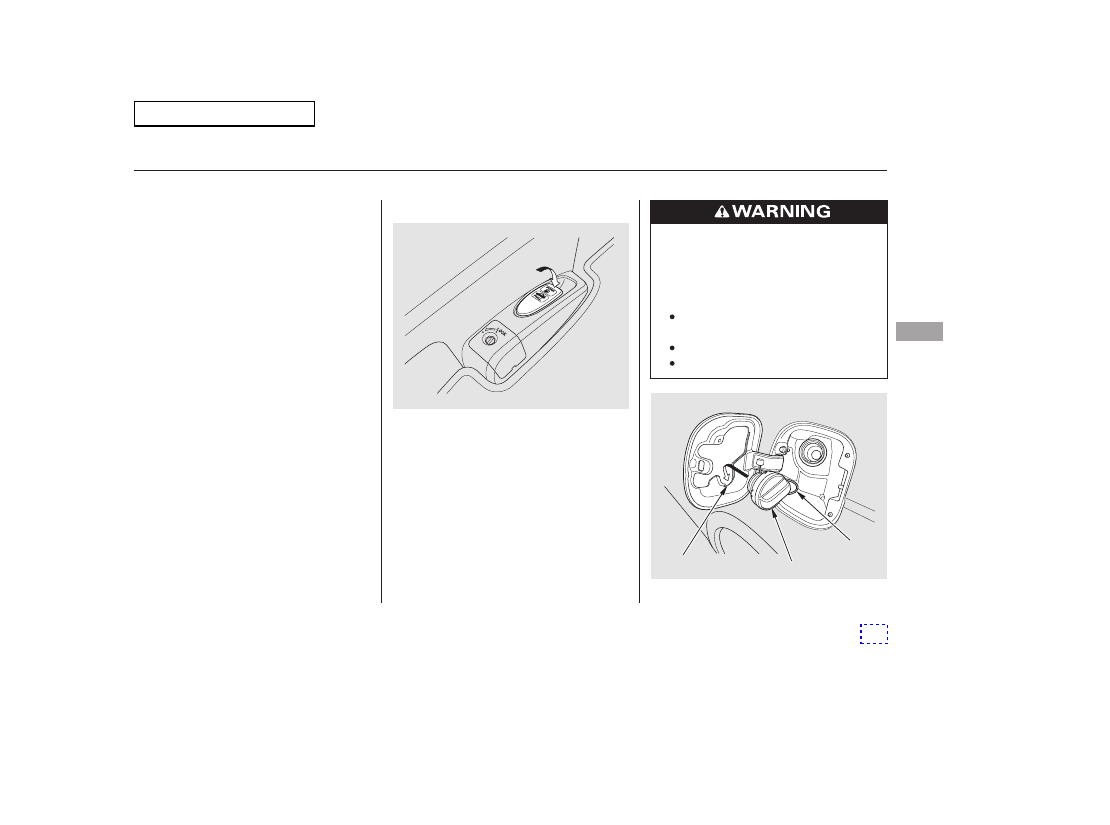Honda Accord Coupe L4 (2011 year). Manual - part 19

CONTINUED
Park with the driver’s side closest
to the service station pump.
To open the fuel fill door, push
down on the lever located to the
left of the driver’s seat.
Some gasoline today is blended with
oxygenates such as ethanol or
MTBE. Your vehicle is designed to
operate on oxygenated gasoline
containing up to 10% ethanol by
volume and up to 15% MTBE by
volume. Do not use gasoline
containing methanol.
If you notice any undesirable
operating symptoms, try another
service station or switch to another
brand of gasoline.
For further important fuel-related
information for your vehicle, or
information on gasoline that does not
contain MMT, visit Owner Link at
. In Canada, visit
for additional
information on gasoline.
1.
2.
owners.honda.com
www.honda.ca
Refueling
Fuel Recommendation, Service Station Procedures
B
e
fo
re
D
riv
ing
Push
TETHER
HOLDER
FUEL FILL CAP
Gasoline is highly flammable
and explosive. You can be
burned or seriously injured
when handling fuel.
Stop the engine, and keep
heat, sparks, and flame away.
Handle fuel only outdoors.
Wipe up spills immediately.
Main Menu